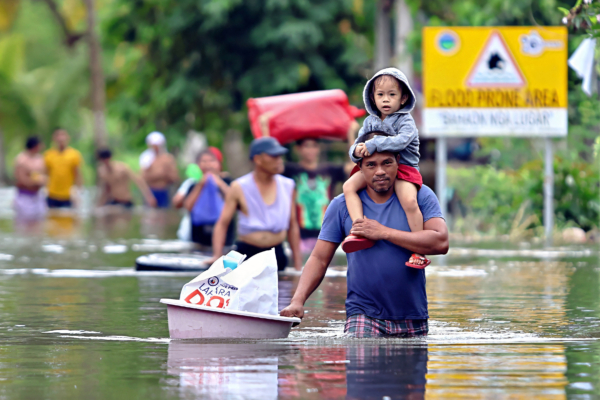Super Typhoon Fung-wong, locally known as 鳳凰 (Feng Huang), started wreaking havoc along the northeast coast of the Philippines before making landfall on Sunday (November 9th). The powerful storm has caused power outages in certain areas of Luzon Island, forcing nearly a million people to evacuate and leading to the suspension of work and classes in multiple regions.
Prior to its expected landfall along the coastal areas of Aurora or Isabela provinces in Luzon Island on Sunday night, Typhoon Fung-wong’s rain bands were projected to stretch up to 1,600 kilometers (994 miles), potentially affecting two-thirds of the Southeast Asian archipelago.
Earlier in the week, Typhoon Kalmaegi struck the Southeast Asian region, resulting in 224 fatalities in the Philippines and claiming 5 lives in Vietnam.
The Philippine government reported that Typhoon Fung-wong sustained winds of up to 185 kilometers per hour (115 miles per hour), with gusts reaching 230 kilometers per hour (140 miles per hour), accompanied by intense rainfall hammering various parts of Luzon Island.
The southern and central regions of the Philippines, including Catanduanes, Camarines Sur, and Aurora provinces, have been placed under the highest alert level, signal number 5, while the Greater Manila Area and neighboring provinces are on signal number 3 alert status.
Defense Minister Gilberto Teodoro issued a televised statement on Saturday urging residents in the storm’s path to adhere to evacuation orders, warning that non-compliance is both dangerous and illegal. He stressed the importance of preemptive evacuations to prevent last-minute rescue operations that could jeopardize the lives of police, soldiers, firefighters, and coast guard personnel.
The Philippines typically experiences around 20 storms annually, with Typhoon Fung-wong being the 21st storm to hit the country this year. Despite the significant destruction caused by Typhoon Kalmaegi, the Philippines has not yet requested international assistance. However, Teodoro mentioned that the country’s long-standing treaty allies, the United States and Japan, are prepared to provide support.
Around 2,000 soldiers undergoing field training have been deployed by the Philippine military to conduct humanitarian aid and disaster response operations.
Bernardo Rafaelito Alejandro, Deputy Director of Civil Defense, highlighted power outages affecting several towns and villages in the eastern regions as Typhoon Fung-wong approaches.
Northern provinces expected to bear the brunt of Typhoon Fung-wong’s impact have declared work and school suspensions for Monday and Tuesday, with most government offices shutting down.
Over the weekend until Monday, at least 325 domestic flights and 61 international flights have been cancelled, with the Coast Guard ordering vessels to avoid dangerous waters.
Authorities warned that more than 20 provinces and coastal areas, including the Greater Manila Area, will face storm surges exceeding 3 meters (almost 10 feet) in height, posing a high-risk, potentially deadly and destructive threat.
(This article references reports from Reuters and Associated Press)

